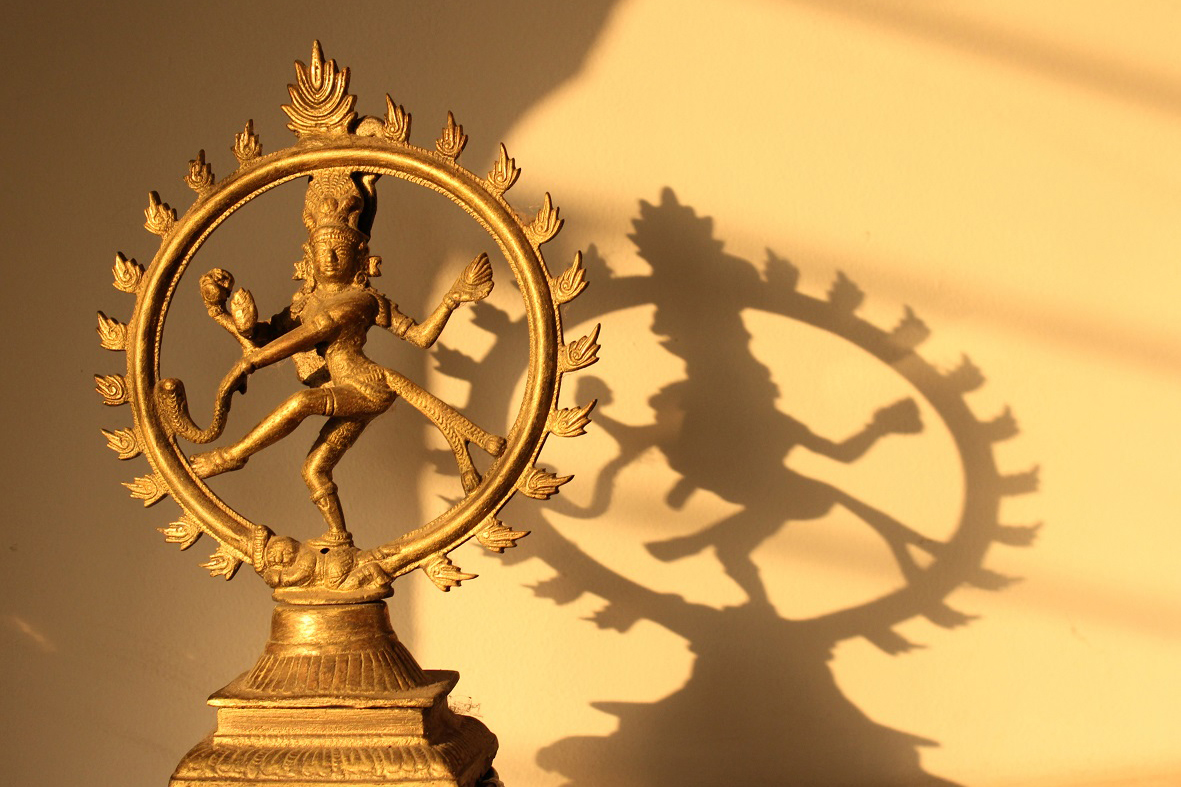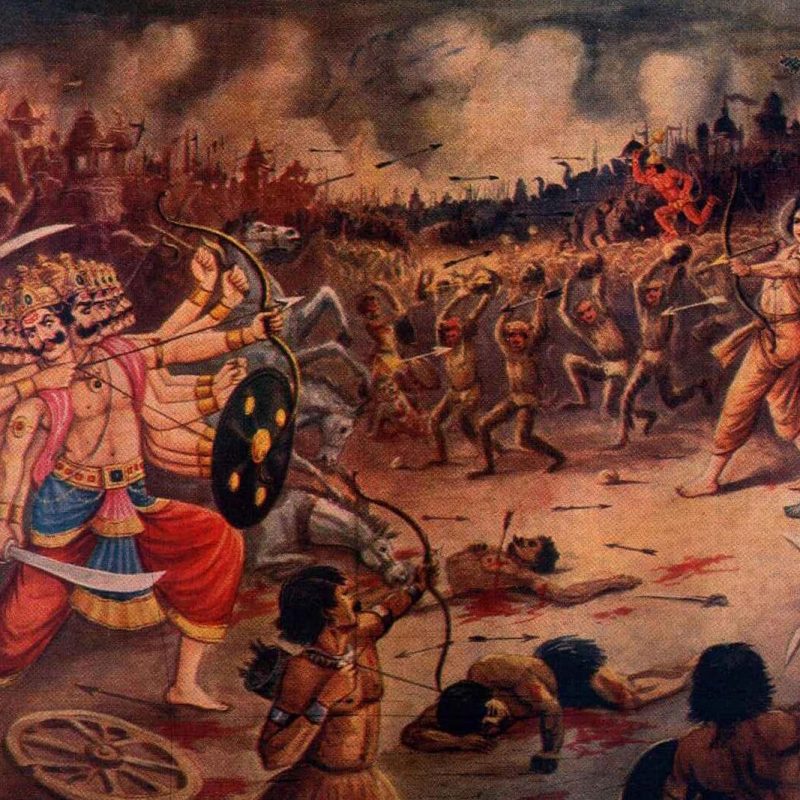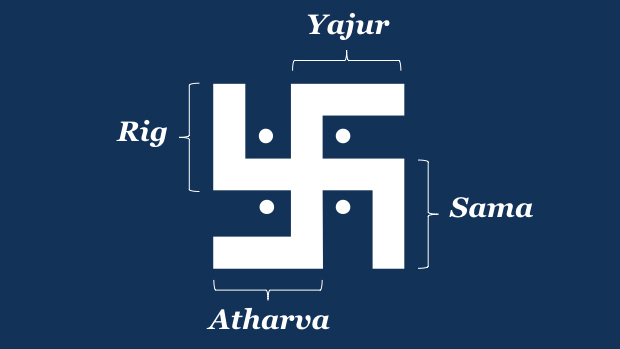
In my 22 years in the US, I have found that one of the things most Americans most frequently wonder about when it comes to intercultural / interreligious understanding is why Hindu images of God have multiple arms or heads etc.
Most non-Hindu Americans intuitively understand that these are symbolic and are meant to convey a special meaning or understanding. But the “cultural distance” is so far apart that there is usually little chance of grasping the essence and most people are basically left with thinking of Hindus as “an ancient culture”, which is true but is also sometimes an euphemism for “weird”.
Three days ago, there was also a Hindu festival, a local festival that is especially popular in the part of India I come from. Some friends asked me to write about the symbolism behind this particular Hindu deity (yes even Hindus ask such questions !!!). I share it below hoping to give my fellow Americans a glimpse into what sort of symbolism is behind every such deity worshiped by Hindus.
I am choosing to share this in particular because many Westerners, including famous scientists such as Carl Sagan (of “Cosmos” fame) and Fritjof Capra (“The Tao of Physics”) and Aldous Huxley (the famous English writer and philosopher) have grappled with this form extensively. It also happens to be one of my favorite Hindu deities.
The Cosmic Dancer
The cosmic dance is the dance of life itself, including creation, preservation, destruction of the entire universe and spiritual grace to understand and go beyond to liberation.
In Hinduism, the objective of life is not to go to heaven but to attain liberation, which means to understand the true nature of ourselves beyond the ego-person that we are familiar with.
I have always wondered why dance was chosen as the art to represent this, not music, painting, poetry, sculpture or any other art. In my view, it may be because dance is the only art that cannot stand by itself without the artist.
One can observe and enjoy paintings, sculptures, poetry and even listen to music, but there is no dance without the dancer being present and visible in the moment. It is a powerful way of showing God is immanent in all of creation. The creator and creation are inseparable.
Ring of Fire
Shiva’s dance is set within a ring of cosmic fire, prabha mandala, which represents time (which destroys everything) and which is shown as a circle to symbolize the Hindu belief that time is cyclical and without end.
Within the cosmos represented by the ring of fire, the form of Nataraja is seen as comprised of five concepts:
Srishti, creation, evolution
Sthiti, preservation, support
Samhara, destruction, evolution
Tirobhava, illusion
Anugraha, release, emancipation, grace
Srishti
His upper right hand holds a small hourglass shaped drum (damaru) that makes the primal sounds of creation Shrishti.
There is this interesting idea in Hinduism that creation originates as sound, as vibration. Fritjof Capra found echoes of quantum theory in this, where all matter is vibrating at the atomic level.
Here are a couple of extracts from Fritjof Capra’s The Tao of Physics:
“The Dance of Shiva symbolizes the basis of all existence. At the same time, Shiva reminds us that the manifold forms in the world are not fundamental, but illusory and ever-changing. Modern physics has shown that the rhythm of creation and destruction is not only manifest in the turn of the seasons and in the birth and death of all living creatures, but is also the very essence of inorganic matter.
“According to quantum field theory, the dance of creation and destruction is the basis of the very existence of matter. Modern physics has thus revealed that every subatomic particle not only performs an energy dance, but also is an energy dance; a pulsating process of creation and destruction. For the modern physicists then, Shiva’s dance is the dance of subatomic matter, the basis of all existence and of all natural phenomena.”
In recognition of this profound and seamless bridging of mythology, religion, science and the ever-changing universe, a large bronze Nataraja stands at CERN, Switzerland, home to the Large Hadron Collider and the main home of modern research into particle physics.
Sthiti
His lower right hand makes the abhaya mudra. It is the gesture of fearlessness or protection for his devotees. It also indicates preservation/support for the cosmos
Samhara
His upper left hand holds a blazing flame or agni, symbolizing his power of destruction.
The way both creation and destruction are held in the dance pose signifies the balance between the two.
There is another interesting aspect of balance as well, that’s not often discussed.
Nataraja has different earrings in each ear. On the right ear is an earring in the shape of a crocodile, usually worn by men. His left ear has a traditional circular earring worn by women. The divine can be seen as male, female, both, and neither, another facet of Hinduism.
Tirobhava
His right foot is on a dwarf, personifying human ego, ignorance and spiritual illusion which he keeps under control. This is the act of tirobhava or veiling — that is, reality is veiled from our understanding.
The serpent around his neck represents both our evil tendencies but also the coiled kundalini shakti within us (those interested in yoga would likely have come across the term kundalini).
Anugraha
Anugraha, grace and emancipation, is indicated by the combination of the lower left hand, which points toward his upraised foot, showing the way to moksha in surrendering to the lord.
The uplifted left leg is revealing grace, which releases the mature soul from bondage. Hindus touching the feet of their elders in respect is an echo of God’s feet being considered holy.








































